This article will review how to hold the ukulele, show two ways to hold your hand to strum, and explain basic strumming patterns.
Written by Shaylie M / Published August 23, 2024
Last updated: August 21, 2024
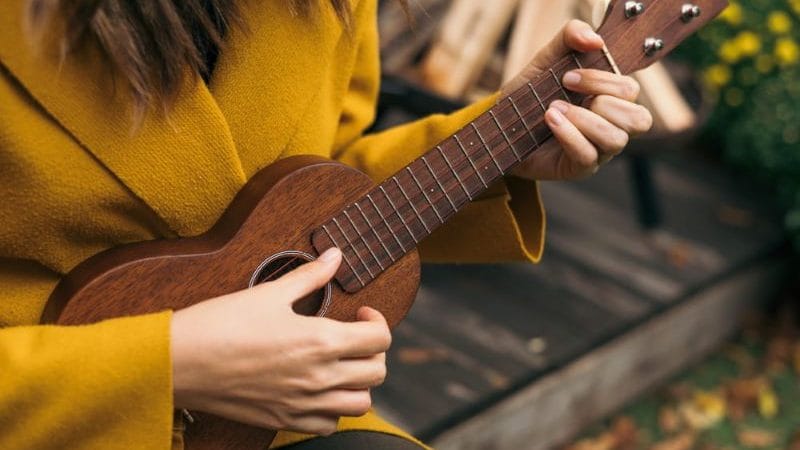
Learning how to strum the ukulele is the next step after learning how to hold the ukulele. Ukulele strumming can have a variety of approaches, but we will teach you the most basic ways to strum and simple patterns to get you started.
Once you have mastered the basics of strumming as detailed in this article, you can refine your technique by checking out some of our other tips for strumming a ukulele here.
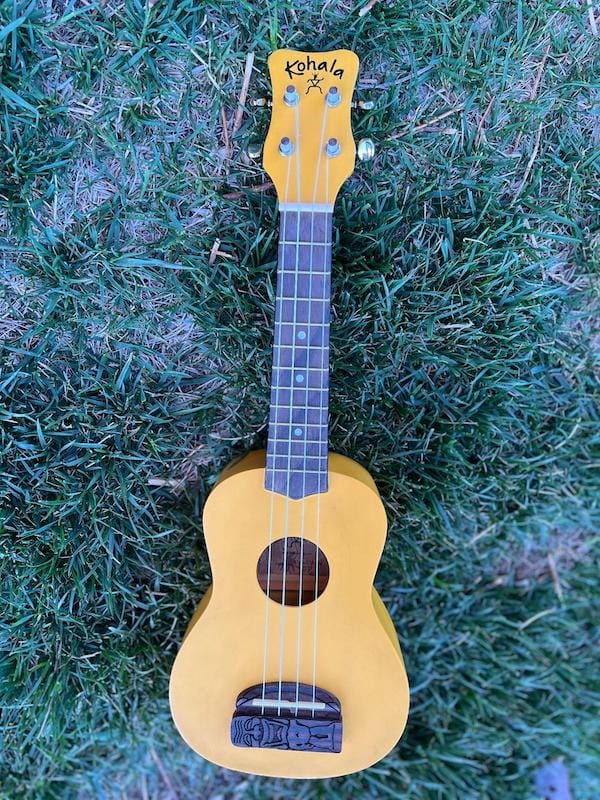
Quick Recap on How to Hold the Ukulele
First, we want to review that you are holding the ukulele correctly before we dive into how to strum the ukulele.
- Rest the ukulele body against your body, near where your waist and leg meet.
- Your left hand will rest against the neck of the body. Your right hand will rest near the bottom of the body.
- Your hand will be near the strings above the sound hole. This is the hand that will be used to strum the ukulele.

The Basics of How to Strum a Ukulele
When strumming the ukulele, the goal is to strum every string in one swift motion so they all resonate at the same time.
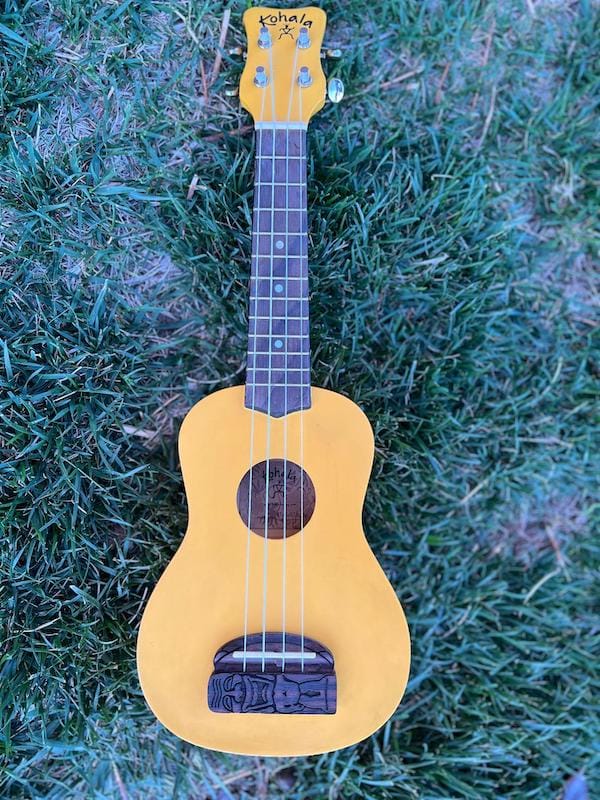
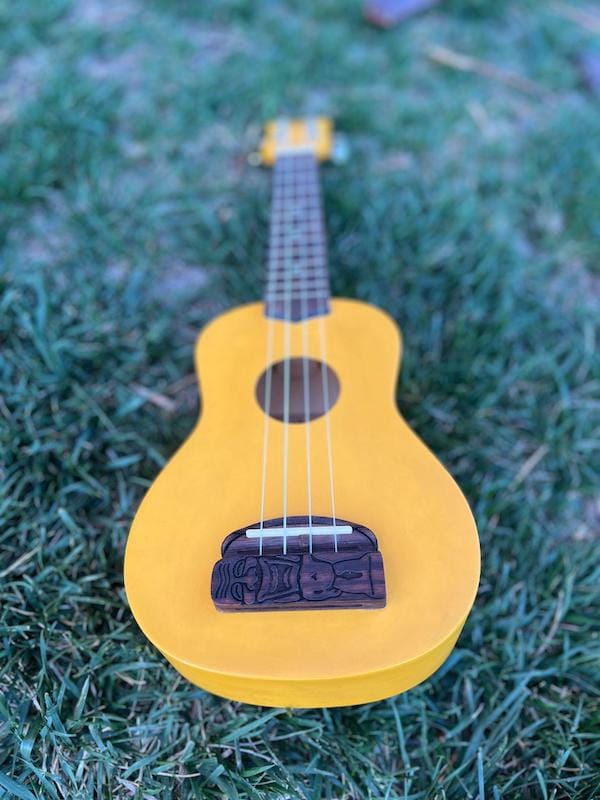
How to Hold Your Hand
There are a couple different ways you can hold your hand to strum. Ultimately, you should choose whatever feels the most comfortable to you. Below we will learn two options for strumming the ukulele: thumb to strum or pointer finger.
Using Your Thumb to Strum
Use your thumb to strum each of the four strings. You can think of your thumb as a hook by putting a slight bend into the thumb. This will help to grip each of the strings as you strum.
Alternatively, you can also straighten out your thumb and use the soft fleshy part on the side to strum the strings. This technique also allows you to strike the strings with your thumb nail on the up strum, leading to greater variation in your playing.
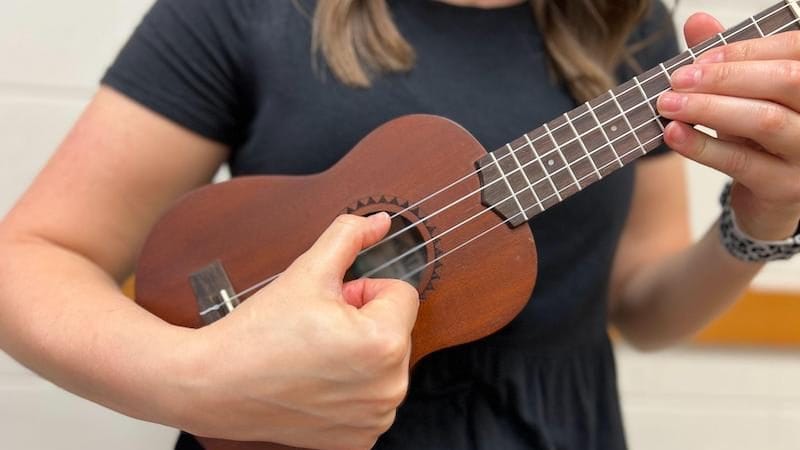
Using Your Pointer Finger to Strum
The second way to strum the ukulele is to hold your pointer finger to your thumb, almost as if you are holding something between the two fingers. You can use the tip of the pointer finger or nail to articulate the strings in one movement.
The up strum uses more of the fleshy part of the finger. Think of it as the opposite to if you were to use your thumb.
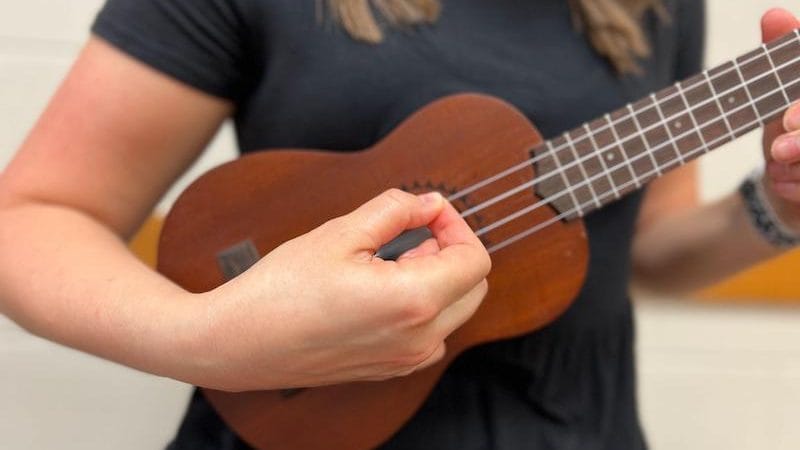
Where to Strum the Ukulele
The strumming action on a ukulele should happen above the sound hole. The ideal distance of the strum should span the strings of the ukulele. Strumming a distance of the body or greater may make it difficult to strum at a fast enough pace or tempo depending upon the song or music you are playing.
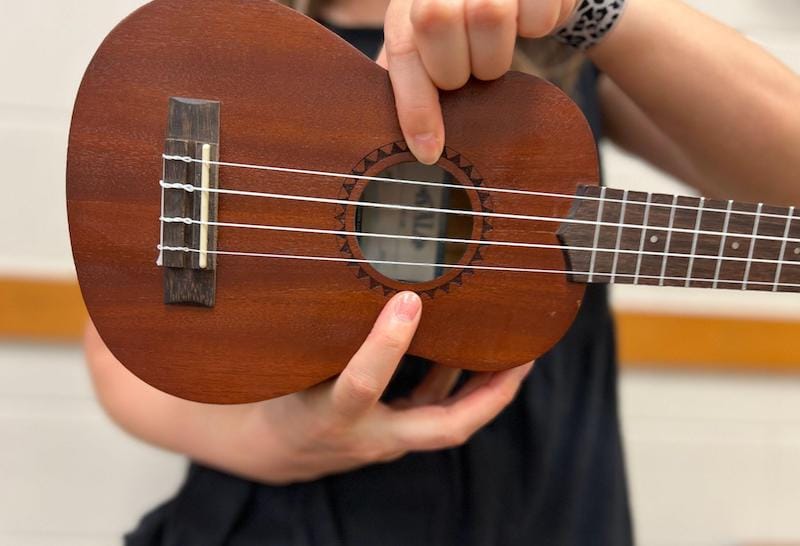
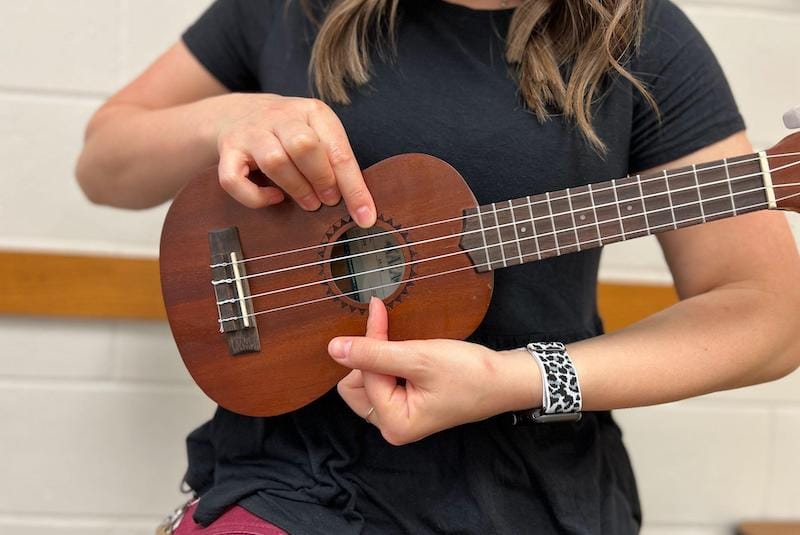
Use Your Wrist
Your wrist will be the primary driver to create sound on the ukulele. While the finger is used to make contact with the string, a gentle turn of the wrist will help to move the fingers over the ukulele and create sound.
Strumming Direction
There are two different directions to strum: down or up. They are as straightforward as they sound, but we will still review them to ensure you feel knowledgeable and comfortable.
Down Strum
The down strum takes place when the strum is moving toward the floor. The strumming finger will move from the top string down to the bottom string.
Up Strum
The up strum happens when the strings are being played moving down to up. The strumming finger will start at the bottom of the strings and swiftly move the strumming finger up toward the ceiling.
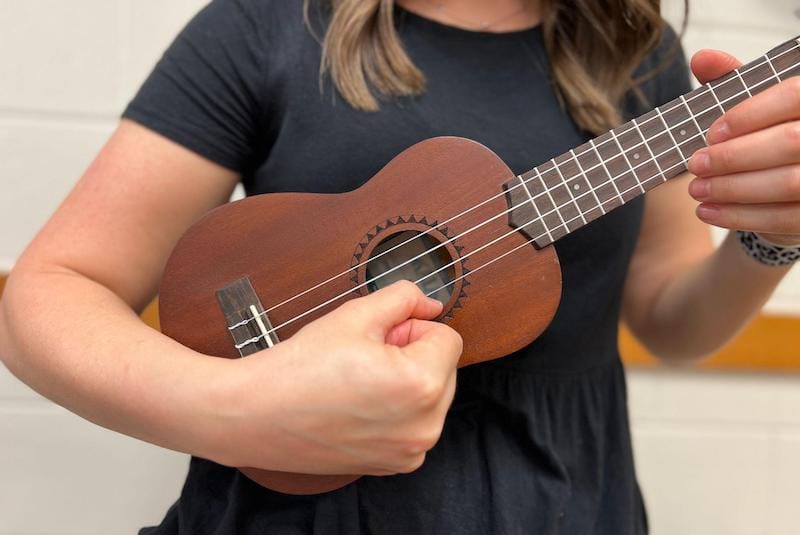
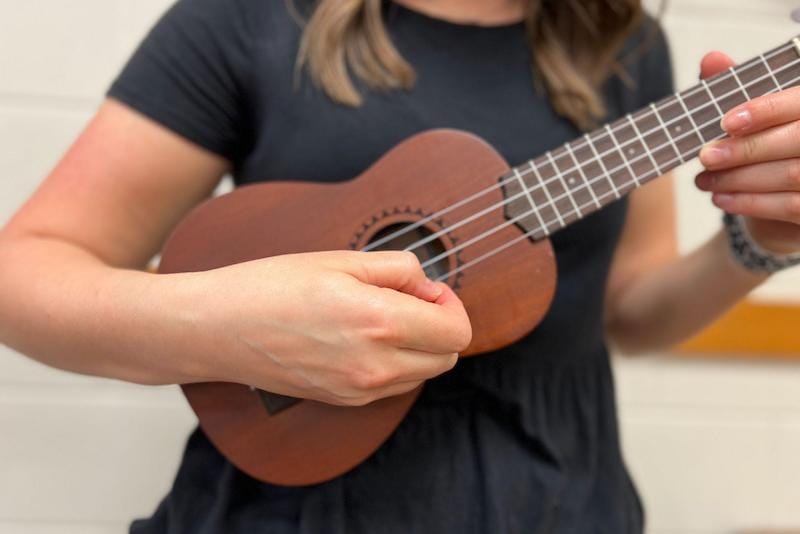
Putting It All Together
After you feel comfortable strumming the ukulele both down and up in separate motions, the next step is to put both actions together. At the end of the down strum, you can reverse the action and create an up strum.
Similarly, if you choose to strum up first, the action will then be followed with a down strum.
This pattern may take some time to pick up. Practice your strumming slowly and as you feel more confident, gradually speed up.
Make It Your Own
The strumming pattern can help a player feel like more of a musician as you are able to add in more of your own personal flair and strumming patterns.
For example, rather than playing a consecutive pattern of down – up – down – up, perhaps you like the feeling and sound of down – down – up – down – down – up.
Experiment with what feels and sounds the best to you!
Ouch… My Fingers Hurt!
When beginning a new instrument, you may feel slight discomfort in the tips of your fingers as they get used to strumming over strings. This is normal and nothing to be concerned about.
Your fingers will build up calluses over time that will protect the skin and make it easier to strum the ukulele.
Conclusion
Now that you know how to strum the ukulele, you can strum to your heart’s content! These beginning approaches will give you the knowledge and skills to become a practiced and confident ukulele player.
What strumming position do you find most comfortable? Thumb to strum or the pointer finger? It’s not super important which way you choose to strum a ukulele, rather, it’s the music that you’re able to produce that matters most.

Shaylie M
WriterShaylie has shared a love for music for as long as she can remember. Since completing her degree in Music Education, she has quickly found the ukulele to be her favorite instrument to teach her young students in her role as an elementary music teacher.




